Spectrum Summary: The UPA Years (2004–2014) | History for UPSC CSE PDF Download
Document Review Process
Final Corrections
- No spelling mistakes were found in the document, but it's essential to ensure accurate spelling for professionalism.
- There are no factual inaccuracies, but claims should align with current document review standards.
- The tone is generally professional.
- The text is now error-free and follows the reviewer's corrections.
- Maintain sentence length and structure while using simple language.
- Format the text without changing its meaning.
- Use tags sparingly for emphasis.
- Employ bullet points for improved readability.
- Use
tags for headings and
tags for subheadings to preserve hierarchy. - Break long paragraphs into concise bullet points with subheadings.
- Avoid adding a summary or conclusion.
- Avoid highlighting multiple words at once.
- Highlight only important keywords and phrases.
- Provide highlights in
- Follow British English conventions for spelling and phrasing.
The UPA Years (2004 — 2014)
After the 2004 elections, the Congress party formed the United Progressive Alliance (UPA) by collaborating with smaller parties to secure a majority over the NDA. Invited by President Abdul Kalam, the UPA, with support from the BSP, Samajwadi Party, Kerala Congress, and Left parties, successfully formed the government. This coalition allowed the UPA to remain in power for two consecutive terms from 2004 to 2014. Despite various challenges, the coalition government navigated political complexities, maintaining stability and securing necessary support for effective governance throughout its decade-long tenure.
Social Welfare and Other Measures
- National Advisory Council (NAC) : During the UPA's first term, the NAC, led by Sonia Gandhi, played a crucial role in shaping social welfare policies. Comprising social activists, the council significantly influenced government policy decisions.
- National Rural Employment Guarantee Act (NREGA/MNREGA) : Launched in 2006, this initiative aimed to alleviate rural poverty by guaranteeing 100 days of paid work annually for rural households, with a focus on gender inclusion by reserving one-third of jobs for women.
- National Rural Health Mission : Initiated in 2005, this mission aimed to improve healthcare in rural areas by enhancing healthcare infrastructure and service quality.
- Right to Information Act (RTI) : Enacted in 2005, the RTI empowered citizens to request information from public authorities, ensuring timely responses and promoting transparency through record computerisation.
- Value Added Tax (VAT) : Introduced in 2005, VAT replaced the complex sales tax system, aiming to create a more efficient and equitable taxation structure for goods and services.
Foreign Relations
- Indo-US Civilian Nuclear Agreement : The UPA government prioritised strengthening ties with the United States. Prime Minister Manmohan Singh's visit to the US in July 2005 initiated discussions on this agreement, formalised during President George W. Bush's visit to India in 2006. The agreement facilitated India’s access to US nuclear fuel and technology, ending a three-decade ban on nuclear trade, albeit with conditions for IAEA inspections of Indian nuclear reactors. The government faced a confidence vote in July 2008 after Left parties withdrew support over this agreement.
- India-China Relations : The UPA made efforts to enhance relations with China, marked by Chinese President Hu Jintao's visit to India in 2006 and Prime Minister Singh's visit to Beijing in 2008. This engagement led to the reopening of the Nathu La Pass in 2006, fostering trade and exchanges between the two nations.
- Election of Pratibha Patil as President : In 2007, Pratibha Patil was elected as India's first female President. A Congress party member and former Governor of Rajasthan, her election marked a significant step towards gender inclusivity in Indian politics.
Terror Attacks in India (2007-2008)
- Overview : A series of terror attacks in India between 2007 and 2008 involved various extremist groups targeting multiple locations.
- 2006 Malegaon Bombings : Explosions at a Muslim cemetery in Malegaon, Maharashtra, were among the early indications of rising communal tensions.
- Mecca Masjid Blast (May 2007) : A bomb explosion at the Mecca Masjid in Hyderabad highlighted the vulnerability of religious sites to terrorist attacks.
- Ajmer Dargah Bombing (2007) : The bombing at the Ajmer Dargah in Rajasthan underscored the diverse targets of terrorist groups operating in India.
- Samjhauta Express Blast (February 2007) : Initially attributed to Islamic extremists, later investigations revealed the involvement of Hindu extremists in this cross-border train blast.
- Mumbai Terror Attacks (November 2008) : The most severe incident during this period, where Pakistani terrorists targeted key locations in Mumbai, including the Taj Mahal Palace Hotel and Chhatrapati Shivaji Terminus, resulting in significant casualties.
- Security Failures : The Mumbai attacks exposed critical weaknesses in India’s security apparatus, particularly in coastal surveillance and intelligence sharing.
- Ajmal Kasab’s Confession : Captured terrorist Ajmal Kasab revealed that the attacks were orchestrated by the Lashkar-e-Taiba (LeT), a Pakistan-based militant group.
- Legal Proceedings and Execution : In 2012, Kasab was sentenced to death by a special court for his role in the attacks, and he was executed on November 11, 2012.
- Samjhauta Express Case Acquittals (2019) : Four accused in the Samjhauta Express case were acquitted due to insufficient evidence, reflecting the challenges in prosecuting cases of communal violence.
Situation in the States
- Uttar Pradesh : The Bahujan Samaj Party (BSP) , led by Mayawati, won a majority in the Uttar Pradesh assembly elections, bringing stability after a coalition government.
- Southern India : The BJP made significant electoral gains in May 2008, winning in Karnataka for the first time and strengthening its presence in Southern India.
- Jammu and Kashmir : The National Conference formed a government in Jammu and Kashmir with Congress as a junior partner, reflecting the region's unique political dynamics.
- BJP Strongholds : The BJP continued to maintain power in Gujarat, Chhattisgarh, and Madhya Pradesh, reinforcing its position in these states.
Trouble in Kashmir
- 2008 Protests : Protests erupted in Kashmir in 2008 over the allocation of forest land for pilgrim shelters, leading to violent clashes and casualties.
- 2010 Escalation : Tensions escalated in 2010 when police killed a local youth, prompting army deployment and further unrest in the region.
- Protests and AFSPA : Protests intensified following reports of a Quran burning abroad, amidst rising fundamentalist influence, with the central government reluctant to withdraw the Armed Forces Special Powers Act (AFSPA).
The 2009 General Elections
- Election Period : The 15th Lok Sabha elections were held in April-May 2009, with Congress highlighting figures like Manmohan Singh, Sonia Gandhi, and Rahul Gandhi.
- BJP Strategy : The BJP focused on promoting L.K. Advani as their prime ministerial candidate.
- Election Outcome : Congress increased its seat count but fell short of a majority, benefiting from public satisfaction with the economy and support for the US nuclear deal.
UPA Second Stint (May 2009-May 2014)
- Government Formation : The UPA was able to form a government again, with Manmohan Singh sworn in as Prime Minister on May 22, 2009. This marked the first time since Jawaharlal Nehru that a Prime Minister was re-elected.
Telangana Issue
- Pre-Election Commitment : Prior to the 2004 elections, Congress pledged to create a separate Telangana state if they came to power.
- 2009 Election Outcome : Following a successful performance in Andhra Pradesh, Congress faced internal conflict as Chief Minister Y.S.R. Reddy opposed the state division.
- Leadership Change : After Reddy's death in September 2009, the demand for a separate Telangana state gained momentum, driven by K. Chandrasekhar Rao (KCR) and his party, the Telangana Rashtra Samithi (TRS).
- Agitation and Government Response : KCR's fast in November 2009 intensified protests, leading the central government to agree to consider the demand for a separate state.
- Legislative Approval and State Formation : Despite initial pushback, the Telangana Bill was passed in Parliament, leading to the official formation of Telangana in June 2014, with KCR as its first Chief Minister.
Historic Change in West Bengal
- 2011 Election Overview : In May 2011, the Trinamool Congress (TMC), led by Mamata Banerjee, won the West Bengal assembly elections, ending the Left Front's 34-year rule.
- Mamata Banerjee's Leadership : Mamata Banerjee became Chief Minister, marking a significant political shift in the state and reflecting changing public sentiment.
Social Welfare Measures and Legislations
- RTE Act (2009) : Mandated free and compulsory elementary education for all children, requiring private schools to enrol disadvantaged students.
- Women's Reservation Bill : Proposed reserving 33% of legislative seats for women but was shelved due to insufficient support.
- Criminal Law (Amendment) Act, 2013 : Introduced stringent measures against sexual offences in response to a high-profile gang rape case.
- Gang Rape Incident and Public Response : The December 2012 gang rape in Delhi triggered widespread protests, demanding legal reforms to enhance protections against sexual crimes.
- Verma Committee and Recommendations : Headed by J.S. Verma, the committee recommended legal changes to improve responses to sexual offences, excluding the death penalty for rapists.
- National Food Security Act (2013) : Aimed at providing subsidised food grains to eligible beneficiaries, balancing government priorities with those of the National Advisory Council (NAC).
- Mars Orbiter Mission (2013) : ISRO successfully launched the Mars Orbiter Mission, achieving Mars orbit on September 24, 2014, making India the first country to do so on its first attempt.
Corruption Charges and the Lokpal Act
- Lokpal and Lokayuktas Bill (2013) : Introduced to establish an anti-corruption authority in response to rising corruption allegations against the government.
- Anti-Corruption Movement (2011) : Led by Anna Hazare, the movement called for stronger anti-corruption laws, gaining widespread public support and participation.
- Committee Formation and Protests : The government’s decision to form a committee to draft the Lokpal Bill was met with distrust, leading to sustained protests for stronger measures.
- Lokpal Bill Progression : After initial delays, a revised Lokpal Bill was presented in Parliament, addressing major demands from civil society and activists.
- Aam Aadmi Party (AAP) Formation : Arvind Kejriwal and others formed AAP in 2012, capitalising on the anti-corruption sentiment and achieving electoral success in Delhi.
- Lokpal Act Implementation : Passed in December 2013, the Lokpal and Lokayuktas Act aimed to investigate corruption in public offices, though it faced criticism for excluding the judiciary from its purview.
Conditions before General Elections
- Corruption Allegations : Ongoing corruption charges against the UPA government dominated the narrative leading up to the elections.
- Rural Distress : The rural sector was in crisis, highlighted by a surge in farmer suicides attributed to mounting debts and crop failures.
- Economic Challenges : Despite a significant loan waiver in 2008 aimed at alleviating farmer distress, issues such as rising prices and unemployment contributed to public dissatisfaction.
The 2014 General Elections
- Campaign Shift : The 2014 elections marked a shift towards a presidential-style campaign, focusing on individual leaders rather than party strengths.
- Congress Strategy : Congress positioned Rahul Gandhi as their leader, aiming to retain public support despite challenges.
- BJP Strategy : The BJP showcased Narendra Modi as their prime ministerial candidate, emphasising development and governance.
- Modi’s Campaign : Modi's campaign leveraged modern techniques and resonated with younger voters, focusing on economic growth and development.
- Election Results : The BJP won a decisive majority with 282 seats, while Congress faced a significant decline, securing only 44 seats, reflecting a major shift in the political landscape.
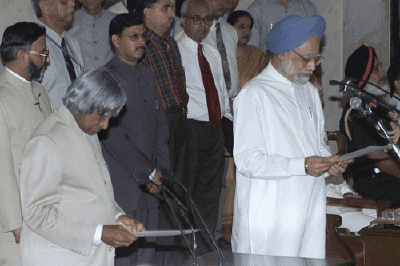
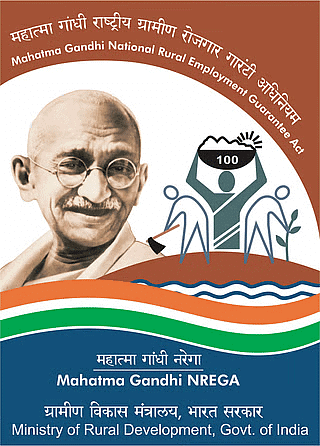
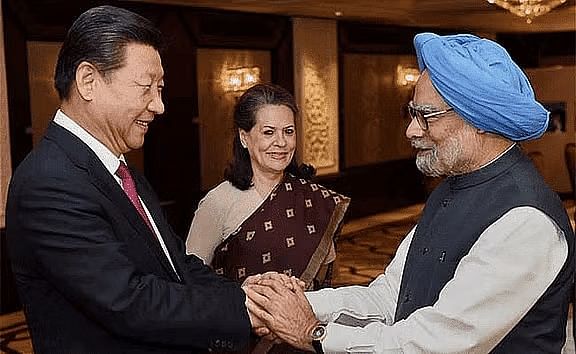
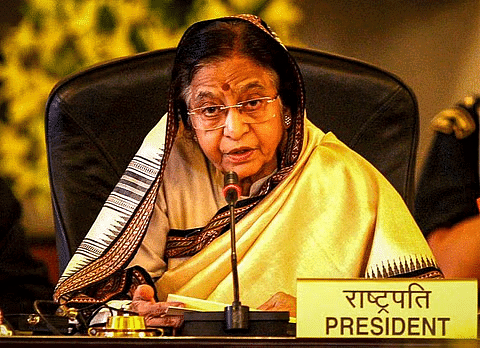
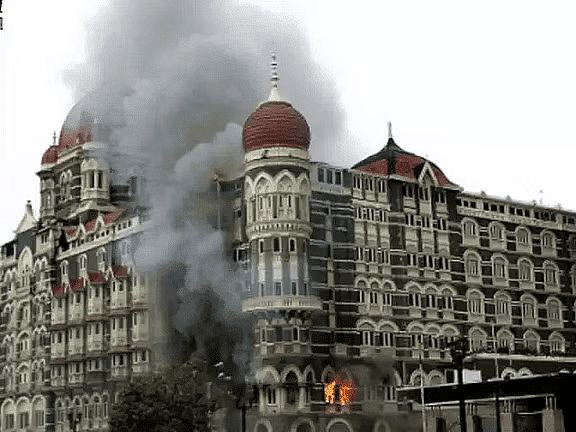

- The Bahujan Samaj Party (BSP), led by Mayawati, won a majority in the assembly elections and formed the government in Uttar Pradesh. After a long time, the state was free of a coalition government. This brought stability to the state. In May 2008, the BJP made an inroad in the South for the first time, forming the government in the state of Karnataka. In Jammu and Kashmir, the National Conference emerged with the largest number of seats and formed a government, with the Congress joining as a junior coalition partner. In Gujarat, Chhattisgarh, and Madhya Pradesh, the BJP was in power.
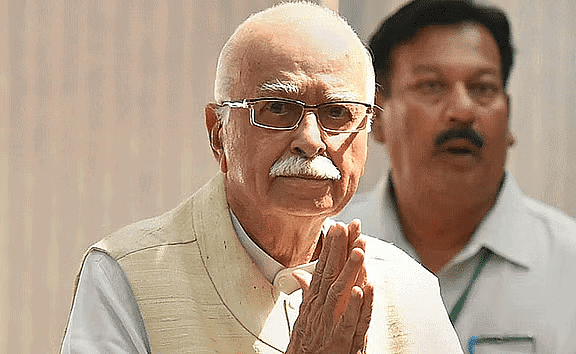
The UPA was once again in a position to form the government. Manmohan Singh was sworn in as the prime minister on May 22, 2009, thus becoming the first prime minister since Jawaharlal Nehru in 1962 to be re-elected after completing a full term.
Telangana Issue
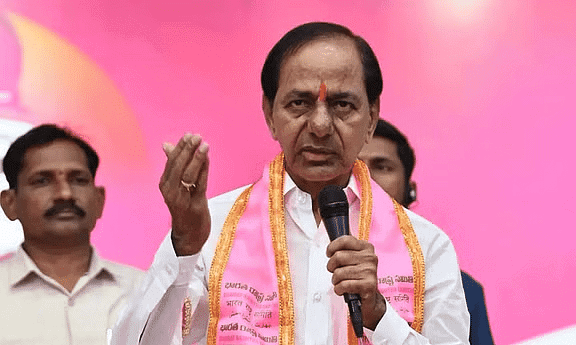
Mamata Banerjee
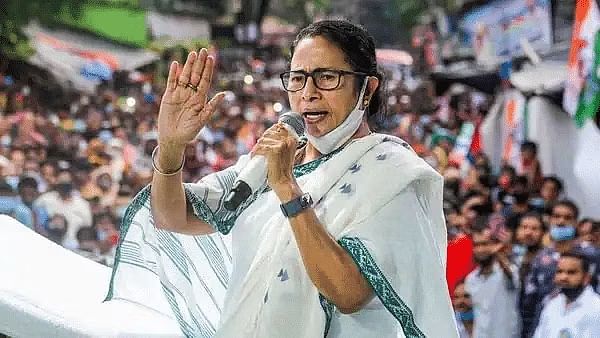
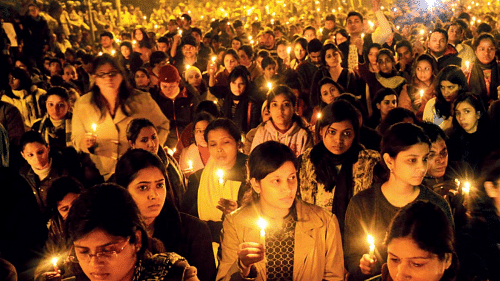
Space Venture to Mars In November 2013, the Indian Space Research Organisation (ISRO) achieved a significant milestone with the launch of its first interplanetary mission, the Mars Orbiter Mission (Mangalyaan). On September 24, 2014, ISRO became the fourth space agency globally to successfully reach Mars orbit, following Russia, the United States, and Europe. Impressively, India became the first country to achieve this feat in its inaugural attempt, demonstrating both technological prowess and cost-effectiveness in space exploration. Mangalyaan
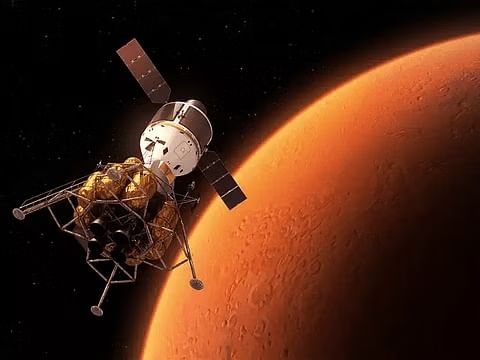
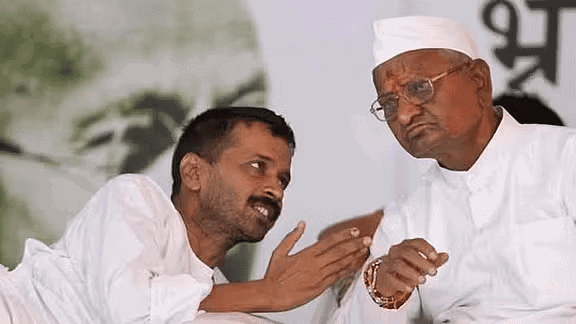
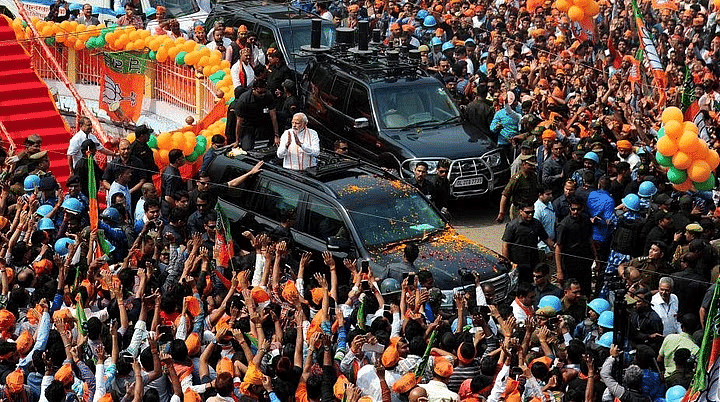
|
110 videos|653 docs|168 tests
|
FAQs on Spectrum Summary: The UPA Years (2004–2014) - History for UPSC CSE
| 1. What is the UPA and when did their years in power span? |  |
| 2. When did the UPA's first term begin and end? |  |
| 3. What were the 2009 General Elections? |  |
| 4. When did the UPA's second term begin and end? |  |
| 5. What were the 2014 General Elections? |  |
















